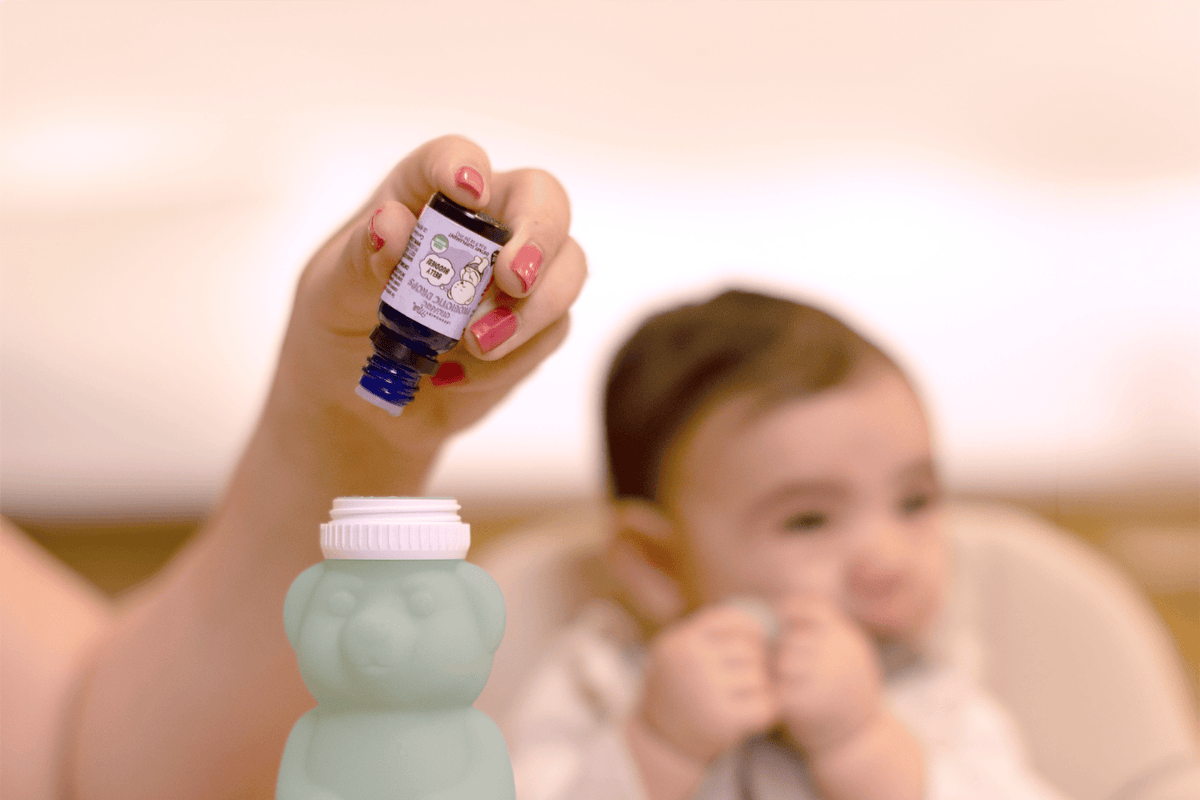
What New Parents Need to Know About Baby Probiotic Drops
|
4 min
|
4 min
When you become a parent, every decision feels big—and that includes choosing the right probiotic for your baby. With shelves (and social media feeds) full of options, how do you know what your baby actually needs? And if you’re breastfeeding, do babies even need a probiotic?
The short answer: sometimes, yes . The longer answer? Let’s dig into the science of infant gut health, the role of probiotics, and how Legendairy Milk’s newly relaunched Organic Baby & Toddler Probiotic Drops can support your baby’s wellness from the inside out.
Your baby’s gut microbiome is the collection of trillions of bacteria, fungi, and other microbes that live in their digestive system. It’s foundational to their immune function, digestion, brain development, and even mood regulation (1) .
Babies are born with a nearly sterile gut, and their microbial makeup develops rapidly during the first 1,000 days of life. The way a baby is born (vaginal vs. cesarean), fed (breastmilk vs. formula), and even exposed to antibiotics early in life can all shape the diversity and resilience of their gut flora (2) .
Breastmilk isn’t just nutrition—it’s living food . It contains prebiotics (human milk oligosaccharides or HMOs), probiotics (beneficial bacteria), and immune factors that seed and support a healthy gut microbiome (3) .
However, even breastfed babies can experience gut imbalances due to factors like:
Cesarean birth
Antibiotic exposure (in parent or baby)
Food intolerances or sensitivities
Environmental factors
This is where baby probiotics may be useful.
Probiotics are live microorganisms that, when administered in adequate amounts, confer a health benefit on the host (4) . In babies, they can help:
Balance gut flora after antibiotic exposure (9)
Reduce symptoms of colic and gasiness (10)
Support immune function (11)
Potentially reduce eczema and allergies (8)
Not every baby needs a probiotic, but some signs that your baby’s gut could use support include:
Frequent gas or bloating
Fussiness during or after feeds
Irregular poops (constipation or very frequent, mucousy stools)
Diaper rash that doesn’t resolve easily
History of antibiotics (either baby or breastfeeding parent)
Cesarean birth
In these cases, a targeted, baby-specific probiotic may help restore balance and improve comfort.
Parents who are breastfeeding sometimes encounter issues like:
Oversupply or foremilk/hindmilk imbalance : Leading to gassiness, green stools, and discomfort
Food sensitivities : Baby reacting to proteins transferred through milk
Nipple thrush : An overgrowth of yeast that can affect both parent and baby
Gassy, fussy feedings
While probiotics aren’t a cure-all, research suggests that balancing gut bacteria may reduce some of the symptoms associated with these feeding challenges (7) . For example, a more diverse gut microbiome may reduce inflammation and improve stooling, which can ease gas and fussiness.
The most important thing when choosing a probiotic for your baby? Strain specificity and safety. Different strains have different effects, and not all probiotics are studied in infants.
Look for:
Clinically studied strains , such as Lactobacillus rhamnosus GG or Bifidobacterium infantis
Free from common allergens (dairy, soy, gluten)
No added sugars or unnecessary fillers
Formulated specifically for babies and toddlers
Legendairy Milk's probiotic drops are made with a blend of clinically studied probiotic strains known to support immune and gut health, including Lactobacillus reuteri and Bifidobacterium longum. They’re:
USDA Certified Organic
Easy to use (just 6 drops daily)
Free from synthetic additives, sugar, soy, and gluten
Shelf-stable
They can be given directly or mixed into breast milk, formula, or food for convenience.
Yes! Probiotics can be taken by either the breastfeeding parent (which may transfer benefits through milk) or directly by the baby, depending on the issue.
When using infant-specific, clinically studied strains, probiotics are generally considered safe for healthy, full-term infants (6) . Always check with your pediatrician, especially if your baby is preterm or immunocompromised.
Some studies have shown that certain strains, like Lactobacillus reuteri DSM 17938, may reduce crying time in breastfed infants with colic (5) . Results vary, but some families report major improvement in comfort and sleep.
Some studies have shown that certain strains, like Lactobacillus reuteri DSM 17938, may reduce crying time in breastfed infants with colic (5) . Results vary, but some families report major improvement in comfort and sleep.
Probiotics aren’t a magic solution, but they can be a powerful tool in supporting your baby’s gut health—especially when breastfeeding challenges or medical history suggest an imbalance. Legendairy Milk’s Organic Baby & Toddler Probiotic Drops are a gentle, evidence-based way to support your baby’s microbiome in the early years.
As always, talk with your pediatrician or IBCLC if you have concerns about your baby’s digestion, feeding, or supplement use.
Borre, Y. E., et al. (2014). Microbiota and the central nervous system: Gut-brain axis. Trends in Neurosciences, 37(5), 305-312.https://www.sciencedirect.com/science/article/pii/S0166223614000310
Dominguez-Bello, M. G., et al. (2010). Delivery mode shapes the acquisition and structure of the initial microbiota across multiple body habitats in newborns. PNAS, 107(26), 11971-11975. https://www.pnas.org/doi/10.1073/pnas.1002601107
Newburg, D. S., & Walker, W. A. (2007). Protection of the neonate by the innate immune system of developing gut and of human milk. Pediatric Research, 61(1), 2-8.https://www.nature.com/articles/pr20073
Hill, C., et al. (2014). Expert consensus document: The International Scientific Association for Probiotics and Prebiotics consensus statement on the scope and appropriate use of the term probiotic. Nature Reviews Gastroenterology & Hepatology, 11(8), 506-514. https://www.nature.com/articles/nrgastro.2014.66
Sung, V., et al. (2014). Probiotics to prevent or treat excessive infant crying: systematic review and meta-analysis. JAMA Pediatrics, 168(7), 698-705. https://jamanetwork.com/journals/jamapediatrics/fullarticle/1860198
Thomas, D. W., et al. (2010). Probiotics and prebiotics in pediatrics. Pediatrics, 126(6), 1217-1231. Probiotics and prebiotics in pediatrics. Pediatrics, 126(6), 1217-1231. https://publications.aap.org/pediatrics/article/126/6/1217/65014/Probiotics-and-Prebiotics-in-Pediatrics
Underwood, M. A., et al. (2015). Bifidobacterium longum subspecies infantis: champion colonizer of the infant gut. Pediatric Research, 77(1-2), 229-235. https://www.nature.com/articles/pr2014156
West, C. E., et al. (2009). Probiotics for treatment and prevention of atopic dermatitis. Journal of Clinical Gastroenterology, 43(4), 356-361. https://journals.lww.com/jcge/Abstract/2009/04000/Probiotics_for_Treatment_and_Prevention_of_Atopic.13.aspx